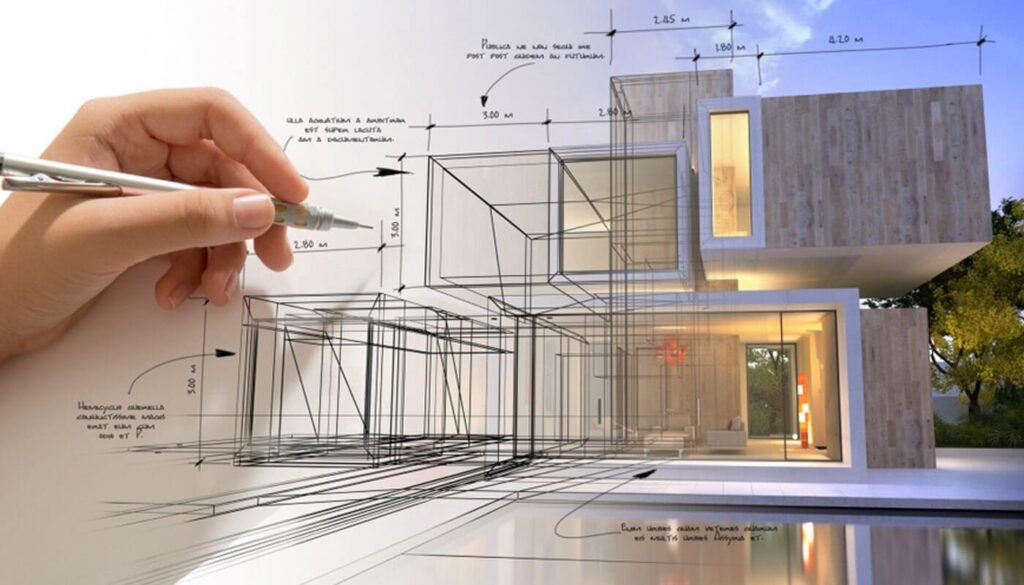An Extensive Overview of Building Styles and Their Impact on Modern City Preparation and Growth
Architectural styles have long offered as a mirror to the societal worths and technological improvements of their time, playing a crucial function in forming contemporary city planning and development. From the splendour of Neoclassicism to the utilitarian strategy of Brutalism, each design has actually presented unique concepts that influence metropolitan looks and functionality.
Historical Overview of Building Designs

As societies transitioned through the Center Ages, Gothic design emerged, defined by its verticality and elaborate outlining, matching the spiritual ambitions of the era. The Renaissance marked a resurgence of classical suitables, merging art and style in cutting-edge manner ins which influenced succeeding styles throughout Europe.

Today, building styles remain to evolve, driven by globalization and sustainability issues, mirroring a dynamic interplay between heritage and advancement. This historical introduction emphasizes the importance of design as a mirror of social development and as a driver for metropolitan development.
Key Architectural Styles Explained
The diversity of building designs shows the myriad influences that shape our developed setting, each symbolizing distinct qualities and cultural significances. Key building styles include Classic, Gothic, Baroque, Innovation, and Postmodernism, each representing one-of-a-kind historical contexts and visual ideologies.
Classic architecture, rooted in old Greece and Rome, highlights symmetry, proportion, and the usage of columns (cda architects). In contrast, Gothic style, thriving in the center Ages, is defined by sharp arcs, ribbed vaults, and flying buttresses, creating an aerial quality in basilicas. Baroque design, arising in the 17th century, is noted by grandeur, elaborate embellishment, and a dynamic interplay of light and darkness
Modernism, which obtained momentum in the early 20th century, focuses on feature over type, using new materials like steel and glass to produce minimal structures. Postmodernism, reacting against the austerity of Innovation, embraces eclecticism and historical recommendation, commonly integrating lively aspects and irony.

Influence on Urban Planning
Fit the advancement of cities, architectural styles significantly affect metropolitan planning decisions. The choice of building design often determines the visual appeals, capability, and general personality of urban environments. Modernism, with its focus on minimalism and performance, urges open areas and the find more info combination of modern technology, forming city layouts that prioritize effectiveness and access. Alternatively, traditional designs might emphasize historic conservation, bring about urban designs that keep cultural heritage and promote pedestrian-friendly environments.
Additionally, architectural styles can affect zoning policies and land make use of plans. Urban planners have to take into consideration the prevailing building patterns when designing areas, making certain that new advancements harmonize with existing structures. This factor to consider promotes natural metropolitan landscapes and enhances area identification.
The execution of certain architectural styles can likewise affect socioeconomic aspects within a city. For example, premium modern designs may attract wealthy locals and businesses, leading to gentrification, while extra inexpensive housing remedies could focus on functional and lasting designs to suit diverse populaces. Inevitably, the interaction between building styles and metropolitan planning produces vibrant cities that show both historical context and contemporary requirements, forming the lived experiences of their inhabitants
Sustainability and Modern Style
Building designs play a critical role in dealing with contemporary challenges, especially in the realm of sustainability. As urban areas increase and environmental concerns intensify, modern style progressively embraces lasting style concepts that focus on energy performance, resource conservation, and minimal ecological influence.
Contemporary building activities, such as biophilic design and environment-friendly style, advocate for frameworks that harmonize with their surroundings, utilizing all-natural materials and promoting biodiversity. These designs usually incorporate eco-friendly power sources, such as photovoltaic panels and wind generators, to decrease dependence on nonrenewable fuel sources and lower carbon footprints.
Moreover, the integration of sophisticated technologies, such as wise structure systems, improves energy monitoring, enhancing resource usage while ensuring more tips here occupant comfort. Innovative water administration strategies, including rainwater harvesting and greywater recycling, more add to sustainable city settings.
Notably, sustainability extends beyond environmental concerns; it incorporates social and financial dimensions also. By cultivating neighborhood well-being and promoting inclusivity, you could try these out modern building styles straighten with sustainable advancement goals. The advancement of architectural methods continues to form resistant cities that not only meet the demands of the existing yet also guard the future for generations to come.
Neighborhood Engagement in Layout
Area engagement in layout works as an important bridge between architects and the populaces they offer, making sure that the built atmosphere shows the needs and desires of its customers. This joint process welcomes neighborhood members to contribute their insights and choices, fostering a feeling of possession and responsibility towards the areas they populate.
Efficient neighborhood engagement uses numerous approaches, such as workshops, studies, and public online forums, to collect varied point of views. These techniques facilitate a two-way dialogue, permitting engineers to recognize regional contexts while equipping citizens to voice their problems and wishes. This inclusivity not only boosts the layout top quality but additionally advertises social equity by resolving the distinct difficulties dealt with by marginalized groups.
Additionally, area involvement can lead to innovative services that could not emerge in a standard layout procedure. By incorporating local knowledge and social worths, engineers can produce spaces that reverberate more deeply with customers, improving functionality and sustainability. Ultimately, prioritizing community engagement in design procedures results in environments that nurture social interactions, assistance health, and reinforce neighborhood connections, therefore playing a pivotal duty fit contemporary metropolitan landscapes.
Conclusion
Building styles have actually exceptionally influenced contemporary city preparation and advancement, mirroring developing social and technical contexts. The assimilation of historic visual appeals with contemporary requirements fosters city environments that focus on sustainability and neighborhood interaction. As cities remain to grow and adjust, the recurring discussion between architectural heritage and contemporary style concepts will certainly stay crucial in producing comprehensive, vivid areas that improve quality of life and promote social equity. The future of metropolitan advancement depend upon this harmonious equilibrium.